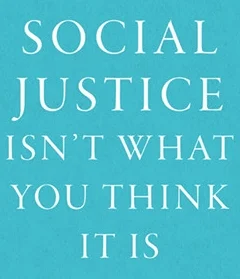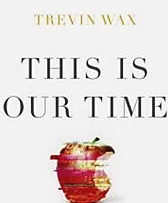From Strength to Strength - A Review
Getting old is not for wimps, as the saying goes. I was about thirty when changing my sleep patterns to do rotating shiftwork became much more difficult. In the past decade or so I’ve found it more challenging to read and absorb as fast as I used to. (To be fair, that may have more to do with my smartphone habits, as Nicholas Carr seems to show in The Shallows.) My workout routine now includes as much effort to avoid injury as it does trying to push the limits to achieve new goals. It’s a hard thing to go through the aging process, especially in a culture that so significantly values youth.
Arthur Brooks, former president of American Enterprise Institute, offers a difficult diagnosis for those around middle age in his recent book, From Strength to Strength: Finding Success, Happiness, and Deep Purpose in the Second Half of Life. Thankfully, he chases that bad news with a healthy dose of encouragement and some helpful suggestions for how to best use the second half of life.
Summary
The book begins with Brooks telling the story of someone well known (he does not identify him) melting down on a plane because he felt like all his work had been for nothing. Having been at the top of his game, in his later years he knew he no longer measured up to that standard and judged his past accomplishments by his present ability. This is a warning. Brooks follows this anecdote with a chapter demonstrating that most people hit their decline much sooner than they recognize professionally.
The bad news is that the decline comes sooner than we would expect. The good news is that it is a particular type of decline. In general, younger people tend to be more adaptable and experience a higher degree of fluid intelligence. This is why software “upgrades” becomes “frustrating changes” at some point in life. On the other hand, there are new intelligences that open up. People tend to become wiser––having messed more things, perhaps––and they also tend to become more articulate. Some professions, especially humanities, tend to gain in acumen as time goes on, largely because of the volume of background knowledge that must be obtained. So, the bad news is tempered by some good news, as long as we are prepared to accept it and adjust ourselves to its reality.
Brooks argues that to age gracefully we must adapt our expectations. It simply isn’t feasible for a fifty year old to expect the same results with the same effort as someone in their mid-twenties. In fact, we are likely to work ourselves to death if we try to even those things out. That is why burnout around middle age is so common. Rather than crash and burn, we should attempt to adjust our expectations gradually. We should remember that we are going to die and live with both the anticipation of what that means and the realization of the limitations that brings. As a result, we should focus more on deep relationships and our spiritual journey (which for Brooks is a blend of Eastern religion and Roman Catholicism), be honest about our changing expectations with those around, and ultimately look for new opportunities that can best use our changing abilities.
Analysis
My own experience in corporate America has reminded me that there is something broken about our expectations. People are expected to continue to ascend the ladder through promotions, often into positions that are increasingly demanding and which absorb more and more time. The end is either fizzling into failure through breakdown or a job transition to another company once the backlog builds too high, or retirement after years of back-breaking effort. Rather than a natural parabola, career progressions appear to be upward sloping lines that end in a sudden drop.
What Brooks recommends is, therefore, a drastic improvement. It is also the sort of advice that could benefit many people who are clinging to past successes earned when the mind worked more swiftly or long hours of focus on a screen seemed less daunting. Accepting Brooks’ advice can change someone’s self-perception from one of loathing to one of hope. In general, this is a good thing.
On the other hand, some of the adjustments to Brooks affirms for later in life would be good for younger folks too. We should not wait until we are on the downhill side of life to focus on community and faith. The advice may be good for those who have neglected those aspects of their lives earlier on, but it is a mistake to presume that those good things can wait to be cultivated. It may be that by investing in one’s religious life and deepening relationships may preclude making it to the pinnacle of success, but it also may prevent the crash from coming. Counterfactuals are hard to conceive, but worth considering.
Conclusion
This is a useful book. There is wisdom in much of what Brooks writes, and this is no exception. As someone who has experienced real decline in several areas of his life, Brooks is speaking as one who is on the journey and is seeking to encourage on the road. From Strength to Strength may be just the sort of book that helps someone struggling with decline from despairing when the inevitable changes come. On the other hand, for those still on the rise, this may be the sort of warning that drives people to reconsider the path they take to make the decline less precipitous.






























Reading your Bible is a battle. There’s a reason why Paul lists Scripture as the sword of the Spirit in his discussion of the armor of God (Eph. 6:17). More even than that, Scripture reveals God’s character and is, thus, central to worshiping well (Psalm 119). That’s why reading the Bible is a battle.